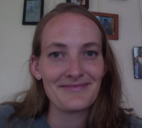By
Annie Perkins, posted October 24, 2016 —
Since enacting
the Mathematician Project, I have received a large amount of feedback from
students and colleagues with whom I have shared the idea. One question I
consistently hear is this: “How are you reaching out to currently practicing
mathematicians?” It’s true, students are more interested in current
mathematicians than those who lived hundreds of years ago. Since the goal of
the project is to get students to see themselves as mathematicians, it’s
helpful when they can see what it would be like to be a mathematician today.
I have not yet
been ambitious enough to invite practicing mathematicians into my classroom,
but I have found and shared videos of mathematicians talking about themselves
and their work. Last year, I shared one such video featuring Brazilian
mathematician Artur Avila, after he won the Fields Medal. Students listened
with rapt attention. Some commented later how interesting it was to hear Avila talk
about his own work. I also found that students retained the information better.
Several months later when I asked what they remembered from class, they
discussed details from the video of Artur Avila. That information had stuck
with them, whereas details from my verbal presentations were harder to recall.
I have also
leveraged Twitter as a network to find and talk with currently practicing
mathematicians. When I surveyed students at the beginning of this school year about
people they wanted to learn about, “Somali” was far and away the most common
request. My Google search, however, didn’t yield much information. Thus, I
turned to Twitter and was soon talking with Jama Musse Jama, who became one of
our featured mathematicians. This choice was particularly satisfying for me because
many of my students know far more about Somalia than I do, so while I taught
them about Jama and his work, they taught me about the meaning of Jama identifying
himself as being from Somaliland instead of Somalia. It was a mutual learning
experience.
I have asked students
to research mathematicians on their own and have had mixed results. The biggest
hang up seemed to be the specificity with which students sought their
mathematician. Students who wanted a female mathematician delved deeply into
the process, whereas students who wanted to research a mathematician who was “black,
lived in Minnesota, had divorced parents, and started their work at a young
age” struggled a lot. Those student choices yielded lots of good conversations between
my students and myself because their mathematician requests tended to be a
reflection of themselves.
I think that
when I try the project again, I will spend more time preparing students for
what they might find as they do their research or send them to my blog and ask them
to choose a mathematician from that list. After all, it took me nearly five months
to find a trans mathematician to share with students; my experience with that
can be illuminating for students. It’s not that their specific mathematicians do
not exist; it’s just a matter of how much effort they plan to spend finding
them.
I highly
encourage you to try this project in your own classrooms. I am only six weeks
into this school year, and students are already hounding me with “Which
mathematician are we going to do on Friday?” I have stronger relationships with
my new students because I have shown them that I value what they value. My students’
mathematical confidence has increased, and I enjoy my job more as a result of
it. Yes, it takes more time but in actuality it only takes me fifteen minutes
to research and five to ten minutes to present my findings in class. If you do
try it, I hope you’ll reach out and share with me how it goes.
 Annie Perkins teaches math in
Minneapolis, Minnesota. For the past three years, she has taught seventh-grade
and eighth-grade math at Lake Nokomis Community School–Keewaydin. This year she
will be teaching tenth grade at Southwest High School. She blogs at arbitrarilyclose.com, and you can
reach her on twitter @anniekperkins.
Annie Perkins teaches math in
Minneapolis, Minnesota. For the past three years, she has taught seventh-grade
and eighth-grade math at Lake Nokomis Community School–Keewaydin. This year she
will be teaching tenth grade at Southwest High School. She blogs at arbitrarilyclose.com, and you can
reach her on twitter @anniekperkins.